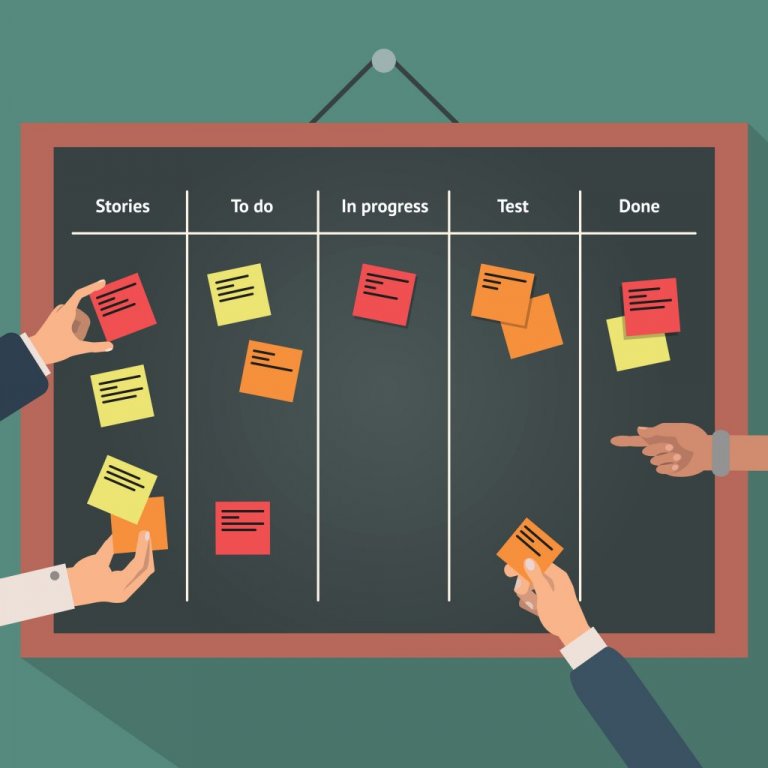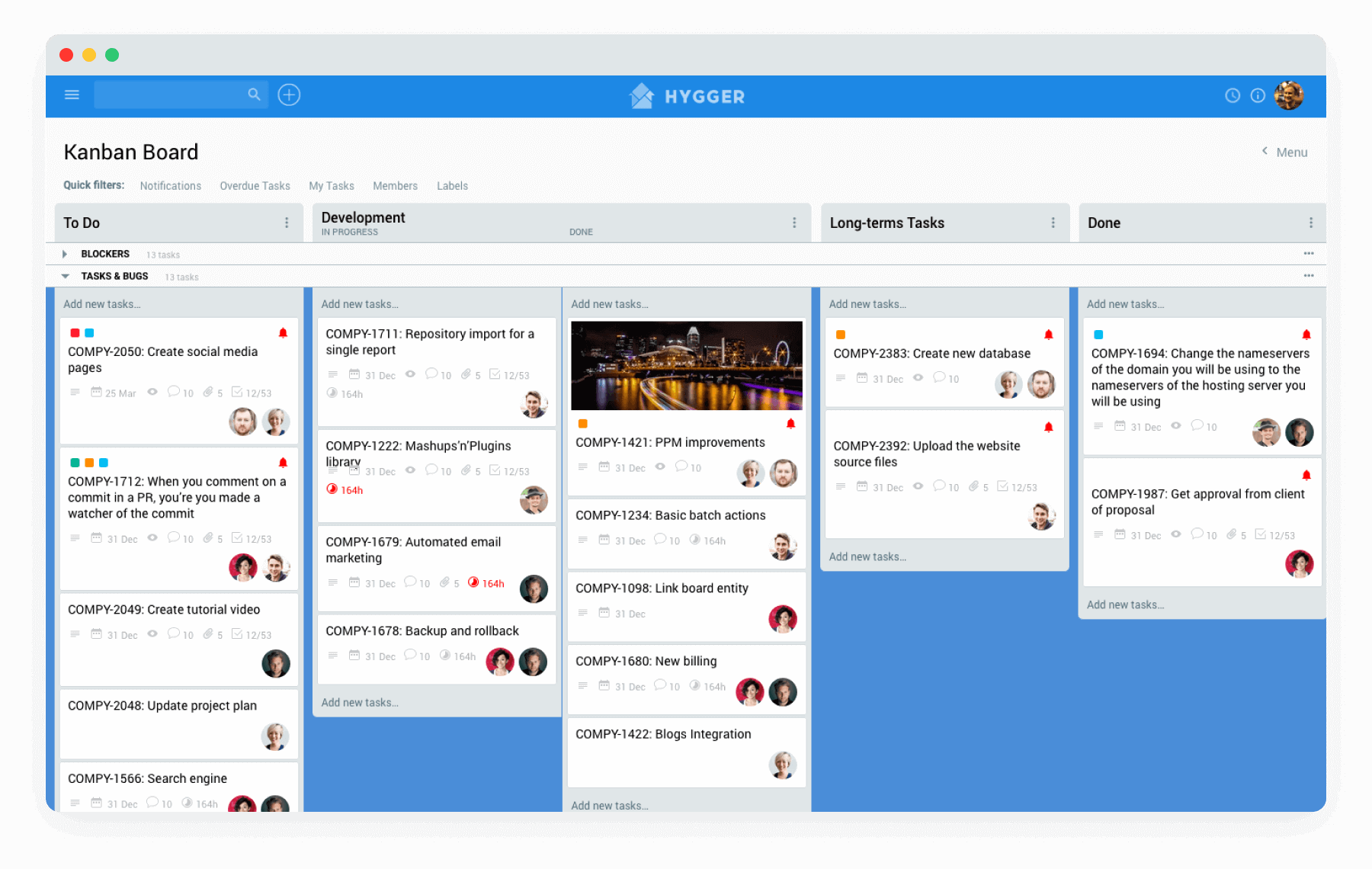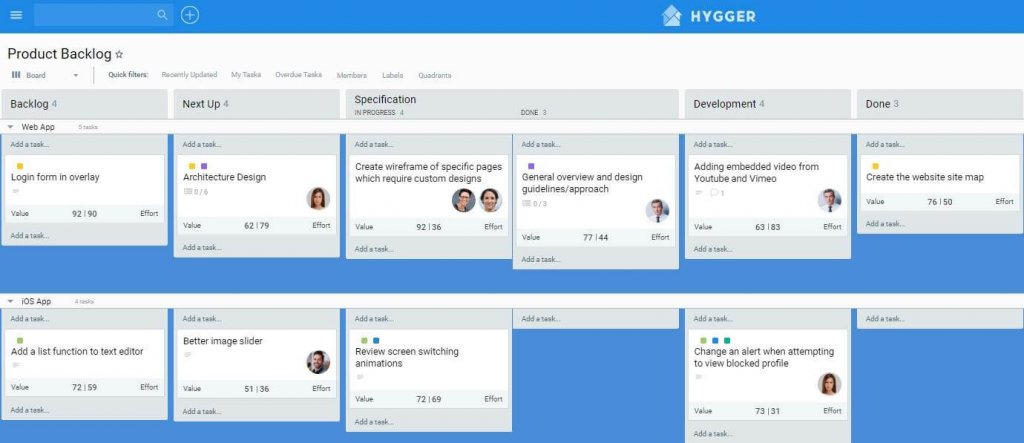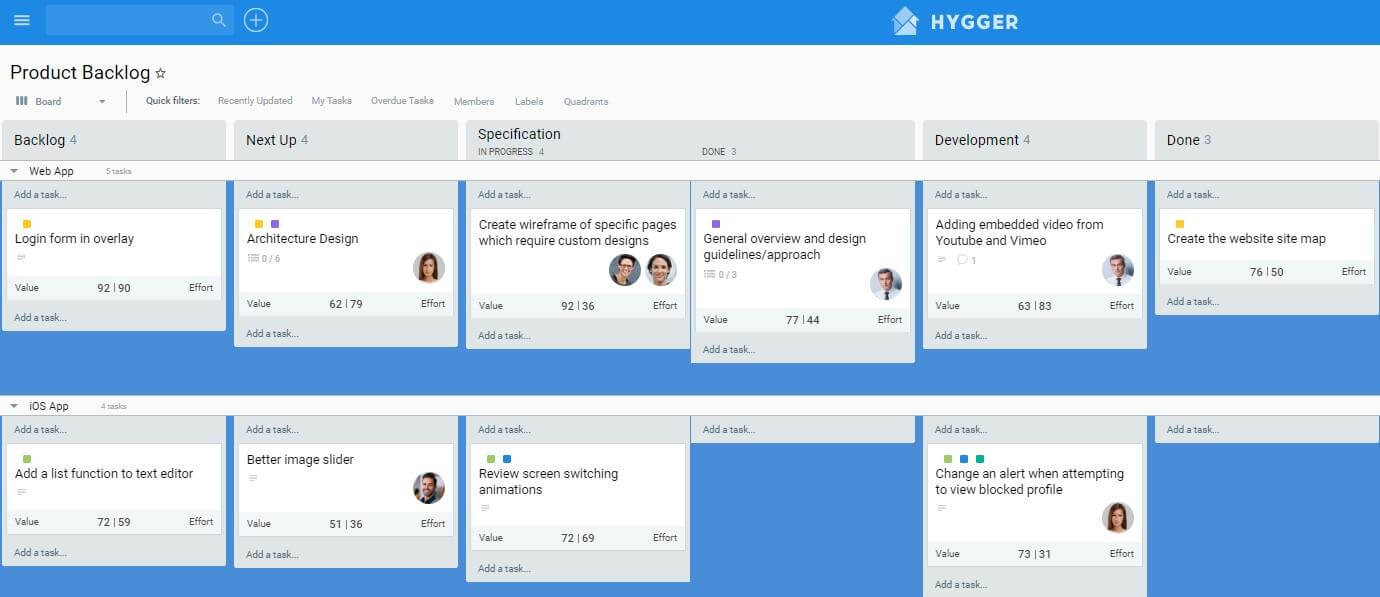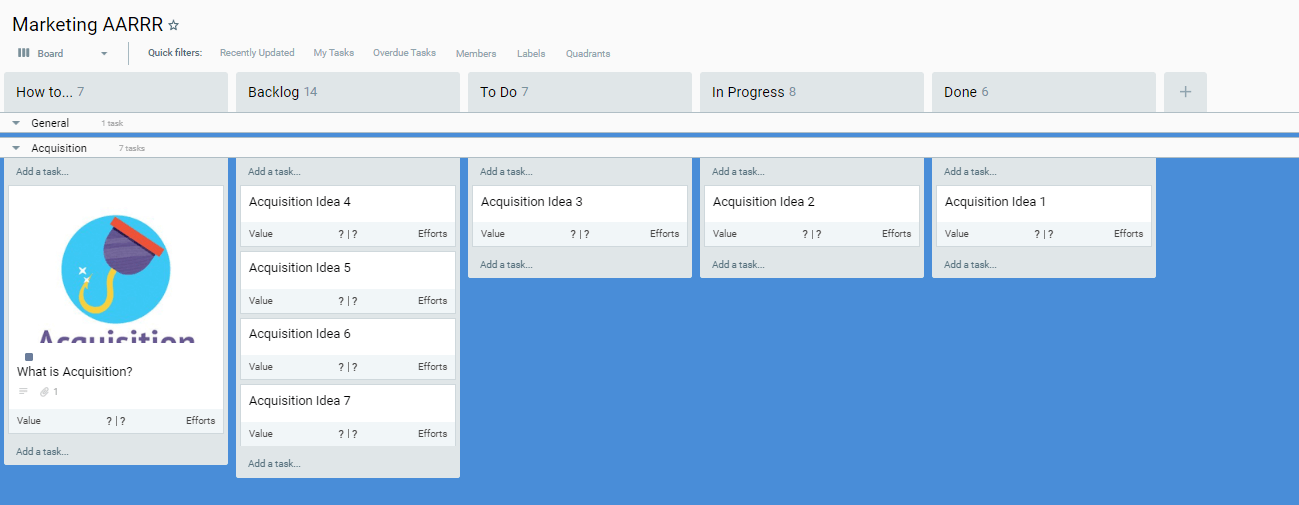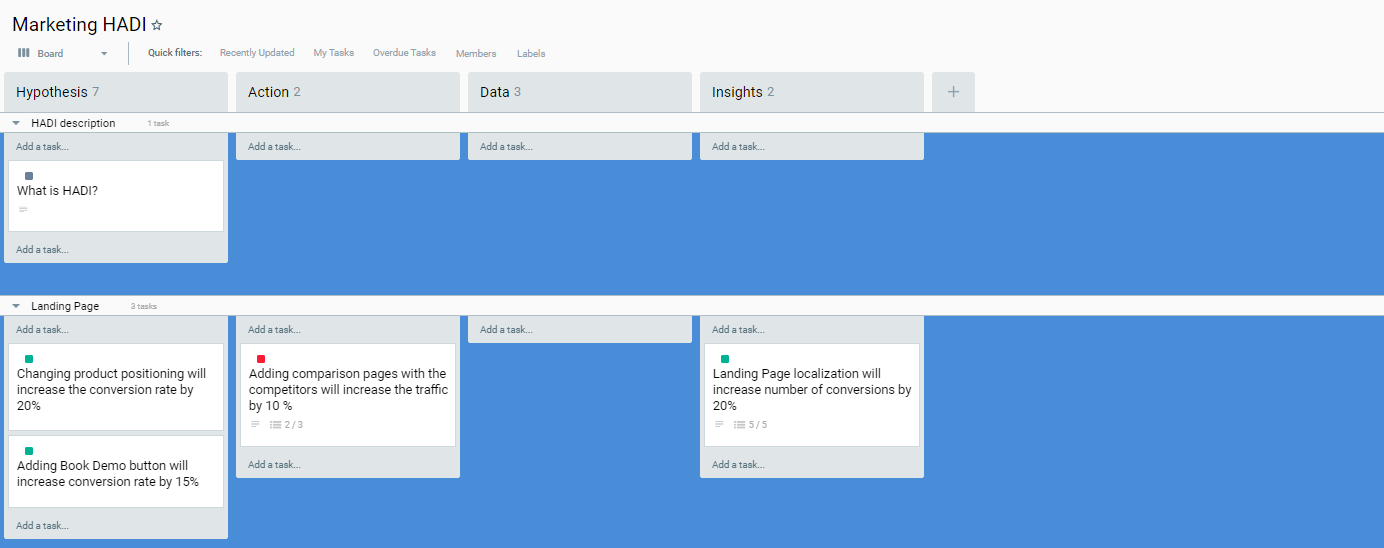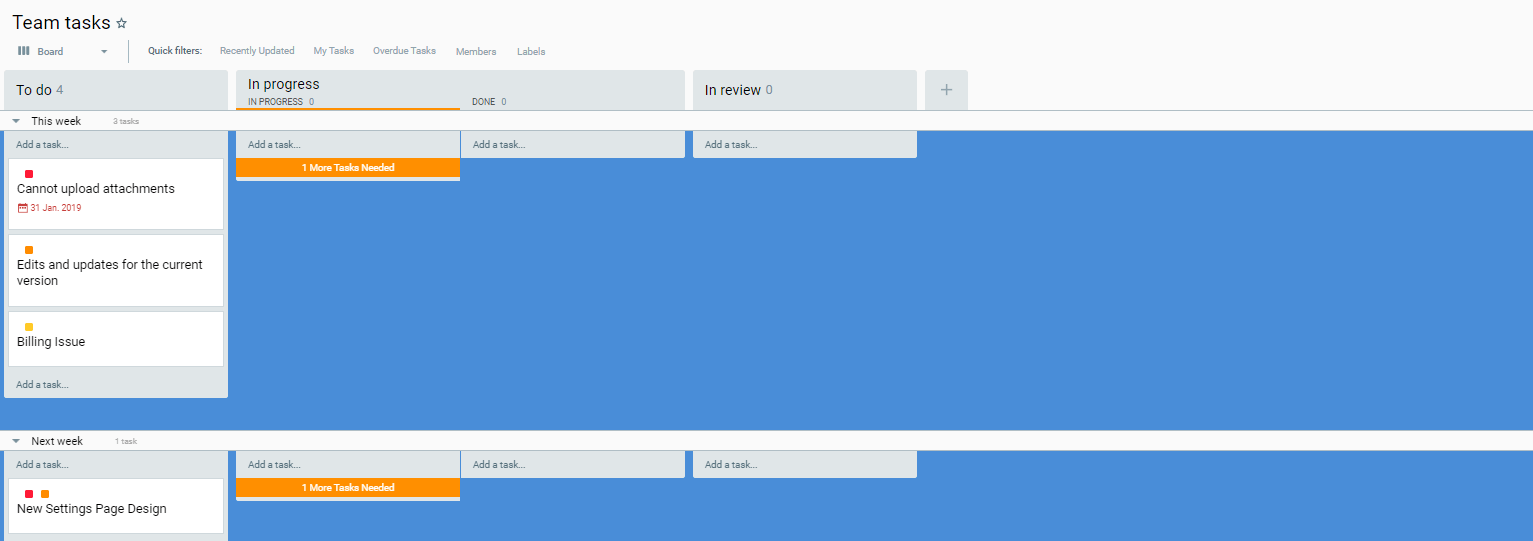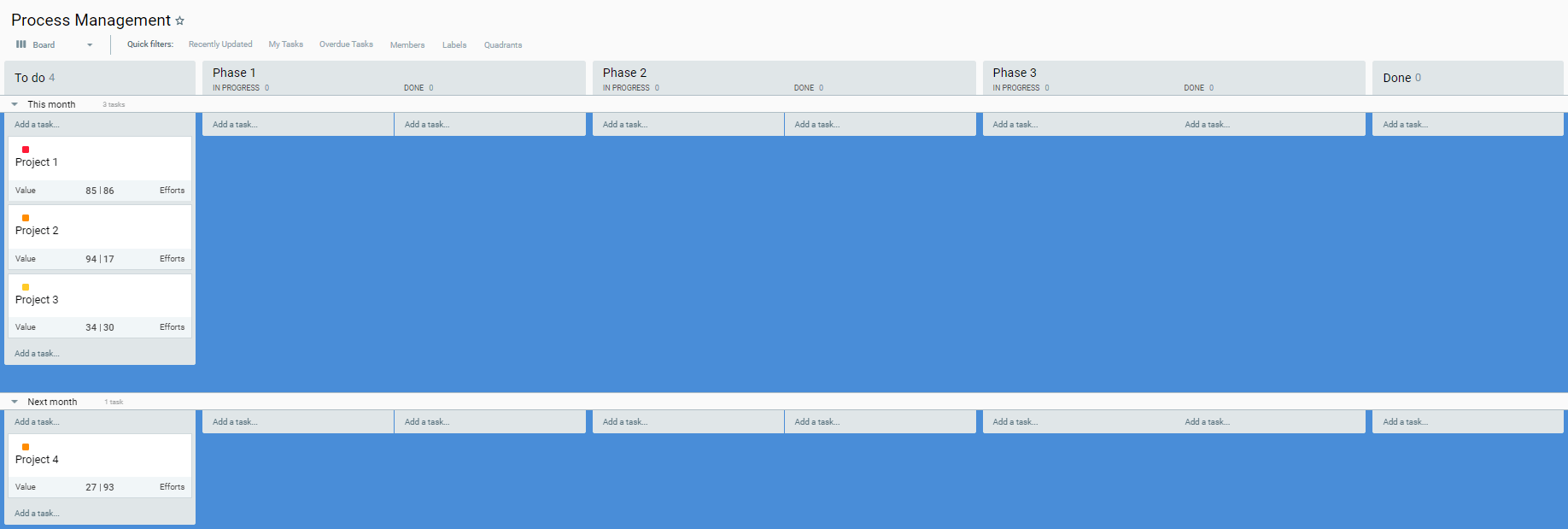Kanban Board Examples
Everything you need to know about the variety of Kanban board examples
Browse topics
The key to a successful Kanban workflow is constant improvement. You can make your process better by visualizing the work steps and making all the bottlenecks evident. Kanban boards with handy Kanban cards are the best possible solution for that.
To better understand the benefits and examples of such boards and cards, let’s first recall a little what Kanban is.

What is a Kanban Board Structure?
A Kanban board is an Agile project management tool that helps to visualize work, limit WIP, and maximize flows.
A typical Kanban board consists of three columns: “To do”, “In Progress” and “Done”. When created and managed properly, it serves as a real-time information hub that highlights bottlenecks within the system and anything else that may disturb working practices.
Every task should have at least one person assigned to it and might come with attached files, images, or comments. Setting deadlines is also possible.
A basic Kanban board structure consists of:
- The main Kanban board itself.
- Vertical columns that belong to the same progress stage.
- Swimlanes (horizontal columns) that allow managing a number of similar projects.
- Kanban cards that present separate tasks. The higher place the card has, the highest priority it gets. Tasks pass through as many columns as your chosen workflow allows.
- Additional elements (filters, labels (tags), due dates, etc.)
Physical and Digital Kanban Boards: Types and Examples
The type of board directly depends on the specifications of your project, your team, and the sphere (industry).
Physical Kanban Boards
Physical Kanban boards are pretty convenient, but they force you to be here and now all together with your colleagues, not giving a chance to cooperate remotely. They are good to use during Kanban meetings.
Digital Kanban Boards
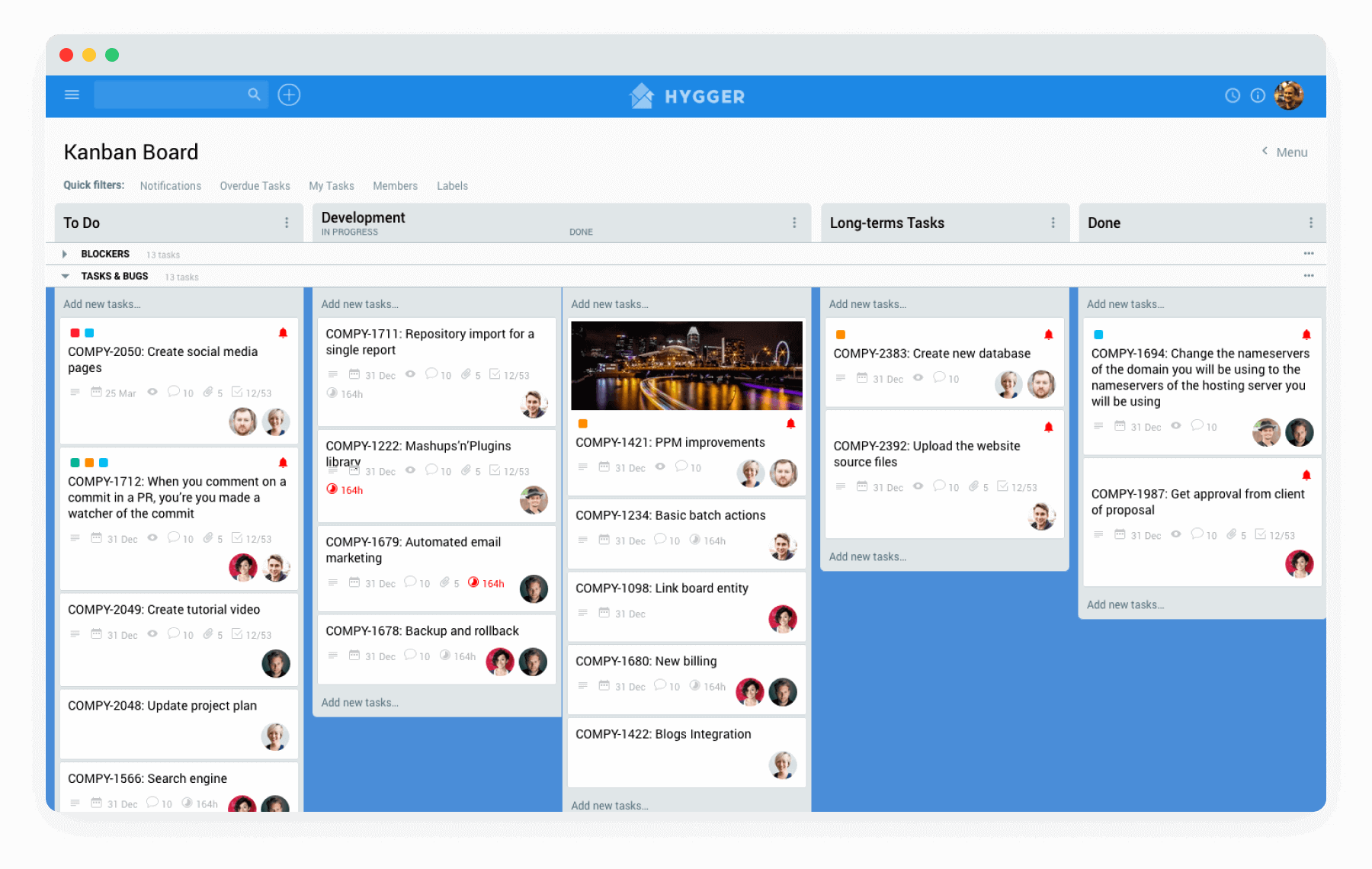
Online Kanban boards are a natural response to remote teams’ needs. They suit modern companies, where working from home is an available option. Digital boards combine the established principles of Kanban, such as WIP limits or Swimlanes, helping businesses succeed in highly competitive markets.
Online Kanban looks more beneficial as a digital Kanban board provides the possibility for your progress to be automatically monitored and analyzed with time tracking and numerous metrics.
Best Kanban Boards Examples
1. Development Team Board
Software development teams implement Kanban boards to increase visibility, handle interruptions, and visually distinguish development work from bug fixes. The main goal of such a board is to produce features, fix bugs, and resolve issues.
At Hygger a typical workflow looks like this: To Do > Pause > Reopened > Developing > Testing > Live.
2. UX Design Team Board
A Design Kanban board is aimed to create interfaces and experiences for products that will amaze customers.
At Hygger, the workflow may be like the following one: Prototype > Implementation > Review > Done.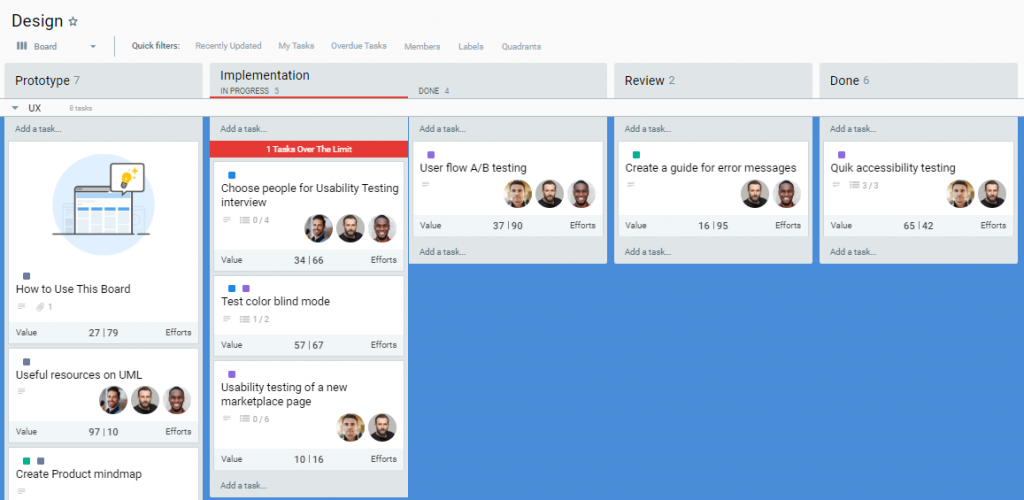
3. Product Backlog Board
This kind of board is aimed to organize all the tasks and queues within your product backlog.
At Hygger, a workflow may look like this: Backlog > Next up > Specification > Development > Done.
4. Software Development Kanban board
The main goal is to produce features, fix bugs, and resolve issues.
Workflow: To Do > Pause > Reopened > Developing > Testing > Live
5. Design Kanban board
The aim of the design team is to create interfaces and experiences for products that will amaze customers.
Workflow: Prototype > Implementation > Review > Done
6. Marketing Kanban board
The purpose of marketing is to attract attention and create interest in the product.
Workflow: Requirements > Implementation > Done
6. Sales Pipeline Kanban board
The main goal is to get leads and close deals.
Workflow: Potential Customers > Leads > Contacted us > Pending Response > Demo Arranged > Final Negotiations > Won > Lost
7. Customer Support Kanban board
The main goal is to provide answers and solutions to users’ questions and issues.
Workflow: Updates and announcements > Tasks > Bugs > Quick Fix > Service Requests > Feature Requests & Suggestions > KPIs & Reports > Done
8. Product Backlog Kanban board
This kind of board is aimed to organize all the tasks and queues within your product backlog.
Workflow: Backlog > Next up > Specification > Development > Done
9. Content Marketing Kanban board
This Kanban board assists authors to keep all their content in one place and organize work with blog posts in a proper way.
Workflow: Blog ideas > Product update posts > Scheduled posts > Writing > Under review > Ready to be published > Posted
10. Marketing AARRR Kanban board
The main goal is to visualize the AARRR (Acquisition, Activation, Retention, Referral, Revenue) framework that helps you better understand your consumers.
Workflow: How to… > Backlog > To Do > In Progress > Done
11. Marketing HADI Kanban board
This Kanban board assists in visualization HADI cycles that are used as a method of building startups. The main idea of the method is that every change affects a certain metric.
Workflow: Hypothesis > Action> Data > Insights
12. Customer Journey Map Kanban board
This board is for Customer Journey Mapping, a powerful way to understand what motivates your customers, their needs, hesitations, and concerns.
Workflow: Awareness > Consideration > Decision > Onboarding > Post-Sales > Renewal
13. Team Task Management Kanban board
The key goal is to keep all team task management issues and challenges in one place and manage them efficiently.
Workflow: To Do > In Progress > In Review>
14. Process Management Kanban board
The goal of this Kanban board is to organize all the tasks and work items related to your process management issues.
Workflow: To-Do > Phase 1 > Phase 2 > Phase 3 > Done
15. Recruitment Kanban board
The main goal of this system of boards and convenient Kanban cards is to select the best candidates and get them on the team.
Workflow: Open positions > Checking Resume > Refuse Resume > Invite to an interview > Final Interview > Make an offer > Closed Positions
16. Team Life Kanban board
The main goal is to help team members organize all informal activities and collaborative events to become more productive and efficient.
Workflow: Ideas > Cinema – Friday > Holidays – Trips > Past activities
17. Welcome to the Team Kanban board
This is one more team Kanban board. The aim is to provide new members with information about corporate and social life, activities, benefits, policies of the company and etc.
Workflow: General information > Open positions > New Team Members > Team Rules > How Do I Order? > Team Events > Corporate Discounts > Social Media pages
Final words
All Kanban board examples mentioned above may vary depending on the focus of work. Some of them may seem simple for you, but others will be more complex with multiple columns and Swimlanes.
Hopefully, now you have no doubt that the Kanban board is an excellent tool for improving workflow efficiency as it visualizes all tasks in a work process and provides overall process transparency.
These practical examples of Kanban boards provide teams with a clear overview of all work items and control them through the different workflow stages.


